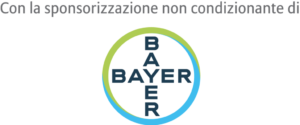The past decades have witnessed a dramatic improvement in blood product safety due to a multifaceted approach including blood donor screening, sensitive infectious disease testing, and good manufacturing practice. Current residual risks of viral transmission range from one per 1 million to one per 2 million units transfused.
Pathogen reduction (PR), also called pathogen inactivation (PI), is an all-encompassing term for a variety of methods, such as photochemical activation or solvent/ detergent (S/D) treatment, which may be applied to blood products after collection to confer broad protection against multiple infectious agents. Many of these technologies are effective across different classes of pathogens (e.g., viruses, bacteria, and parasites) by targeting their DNA or cell membranes.
Since children are a vulnerable population who may not be able to provide informed consent, institutional research boards require additional safeguards in place to protect their interests. These constraints make it more challenging to include children in investigational studies.3 PR/PI blood products have followed these norms; the data regarding blood product use in pediatric patients are limited.
Children and neonates may particularly be at risk of complications due to lower total blood volume, immature immune systems, and susceptibility to metabolic derangements from additives. In addition, this population is at risk of long-term effects due to ongoing neurocognitive development and for having the longest life expectancy after medical intervention in which long-term outcomes may come to pass. On the other hand, an argument can be made that children and neonates have much to gain from these technologies if they can protect against blood-borne infections that might cause severe sequelae.
The uptake of the technology has been slower in the United States compared to the EU countries, many of which have broadly implemented PR/PI PLT transfusions throughout their catchment area. As the United States and other parts of the world are contemplating adding PR/PI products into their inventory, questions about the safety of the products must be grappled with. Further, if it is determined that certain patient groups, such as neonatal patients receiving phototherapy, should not receive large amounts of blood products with psoralens or MB compounds, then hospital-based transfusion services will have the challenge of operationalizing two inventories
In an effort to bring visibility to the number of children and infants who have received PR/PI products, the BEST Collaborative is undertaking a study of the international experience of nations who have implemented their use.
The hope is that this study will bring to light a more expansive representation of the PR/PI blood product usage in children and infants that is not represented in the available literature.
Transfusion. 2018 Sep
Pathogen-inactivated blood products for pediatric patients: blood safety, patient safety, or both?
Jacquot Cyril, Delaney Meghan.



